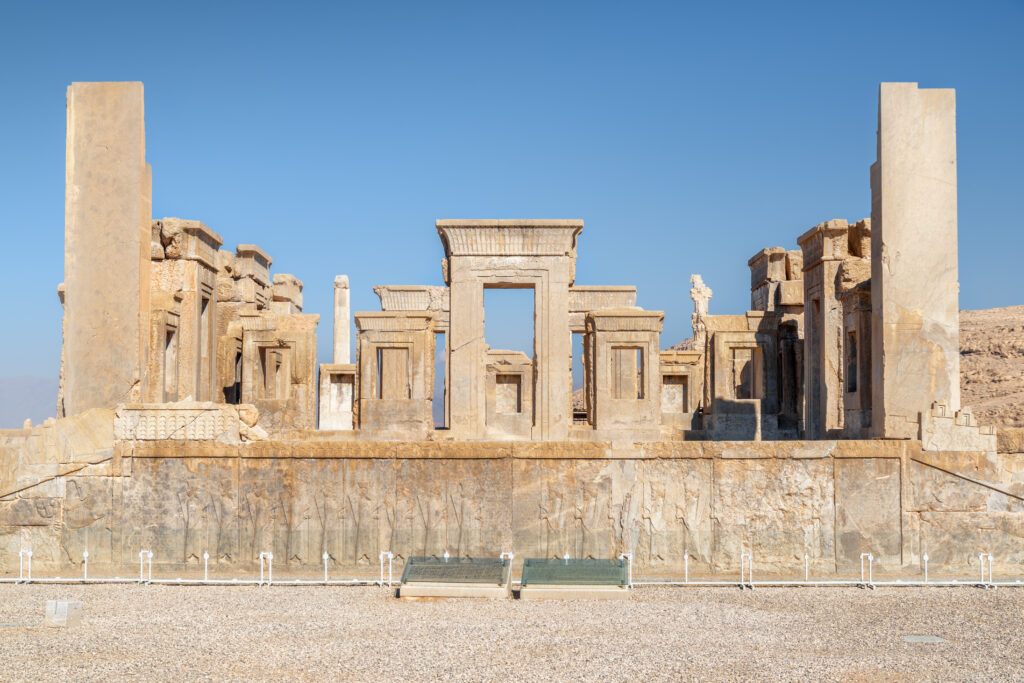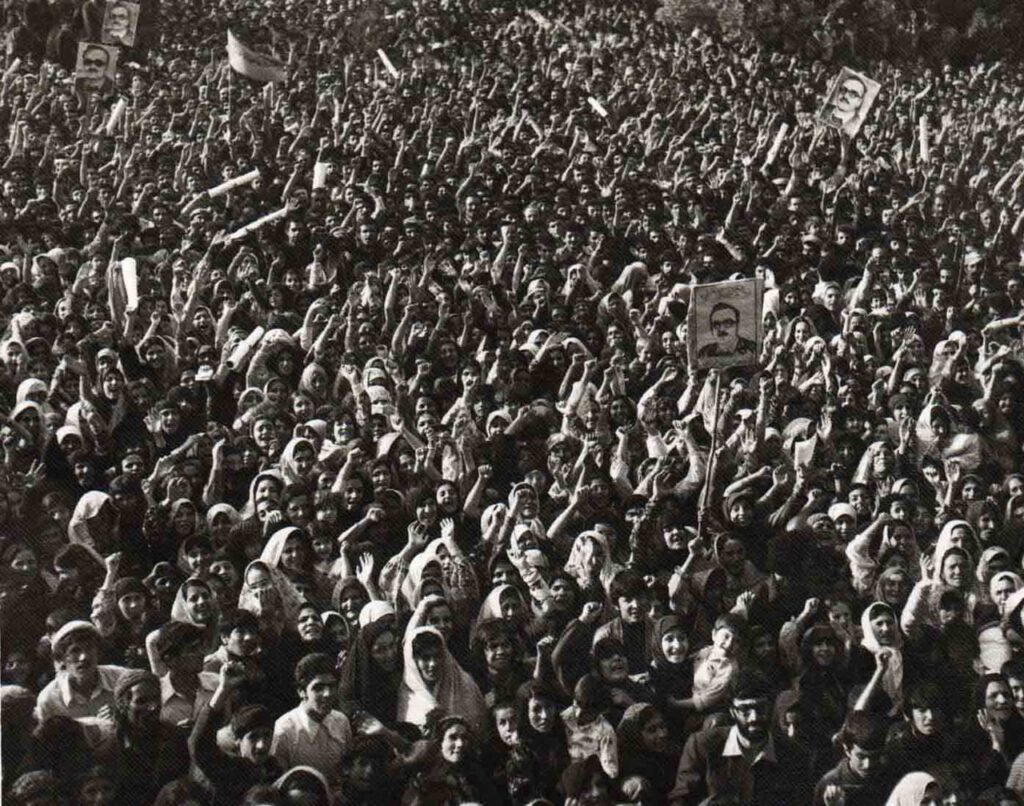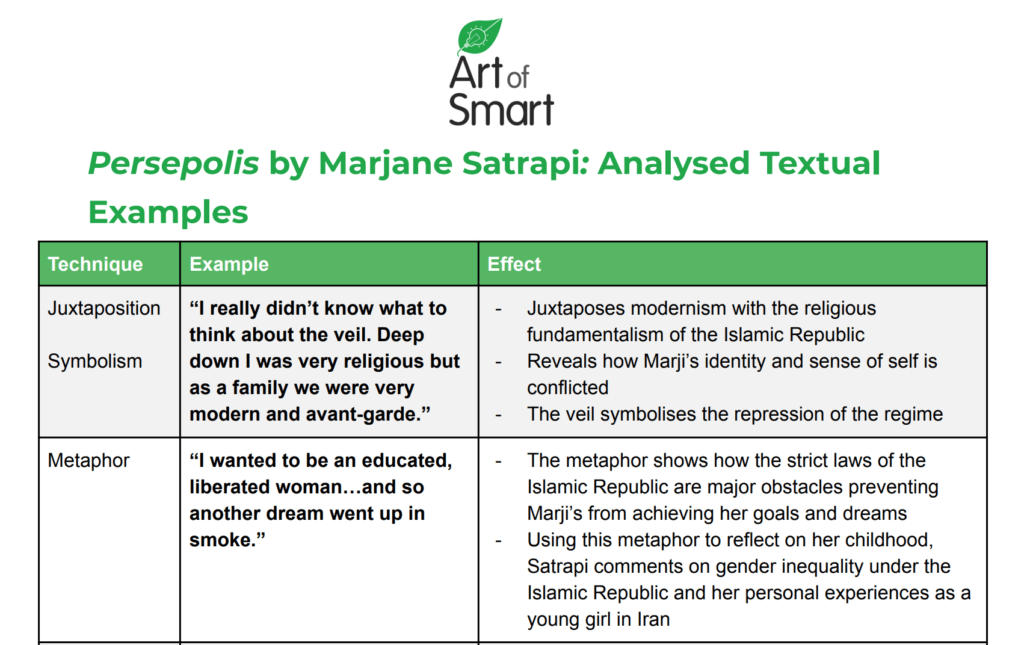Looking for an analysis and summary of the graphic novel ‘Persepolis’ by Marjane Satrapi? We’ve got you covered.
Here’s a summary of Persepolis, its key ideas, context and the themes. We’ll also walk you through how to create your own analysis of Persepolis with a sample TEE Table and paragraph!
It’s time for you to ace your Persepolis analysis — let’s get started!
Full Summary of Persepolis
Analysis of Key Characters in Persepolis
Historical Context for Persepolis Analysis
Themes and Symbols in Persepolis
Writing a Persepolis Analysis in 3 Steps
Full Book Summary of Persepolis
Persepolis is a graphic novel memoir by Marjane ‘Marji’ Satrapi that takes us through her childhood in Iran during and after the Islamic Revolution.
The story begins in 1980, one year after the Islamic Revolution in Iran. 10-year-old Marji narrates the influences of religious extremism within society, particularly in her liberal French co-ed school where classes now separate girls and boys and wearing the veil is compulsory for girls.
Jumping back to the year of the revolution, Marji discusses how her family’s avant-garde, secular ideas and upper-middle-class background exposed her to different political thoughts, ideologies and philosophies.
The ideas she learns at home often clash with what is being taught at school, which confuses Marji and leaves her wondering about where she stands.
Protests in Iran
Noticing her confusion, Marji’s father, Ebi, discusses Iran’s history and their family’s political background and she’s excited to hear that she comes from a long line of rebels.
One day, Marji’s father shares an incident from a protest he attended, which her mother and grandmother find funny.
When Marji doesn’t quite understand what they’re discussing, she becomes determined to read as much as she can and learn about the reasons for the Revolution.
This causes her to reflect on her class privilege and she thinks about her household’s young maid, Mehri.
Upset that her parent’s upper-middle-class lifestyle isn’t consistent with their political views, she attends a protest with Mehri on the one day she shouldn’t have — ‘Black Friday’, which earned its name because it was one of the most violent protests with many deaths.
After many violent massacres and protests, the Shah’s regime eventually comes to an end and Marji
Marji’s Uncle, Anoosh
Marji sees those who were political prisoners under the Shah’s regime as heroes and is disappointed that her father isn’t a hero.
She’s thrilled to hear about her uncle Anoosh, who fled to the USSR to prevent getting arrested but was imprisoned for 9 years when he came back to Iran.
Once he is released, Anoosh visits Marji’s family and she gets to spend some time with him. Marji idolises her uncle and is excited to hear stories about his life.
Unfortunately, as the new Islamic regime grows, many communists, including Anoosh, are targeted again. Marji is allowed to visit him once before he is executed.
Crushed by the death of her hero, Marji rejects her faith in God and begins to experience firsthand the devastating consequences of the regime.
The Iran-Iraq War
When the Iran-Iraq war breaks out, Marji experiences a surge of nationalism and is eager to contribute to the war effort.
But she soon learns about the consequences of war when she hears about the many casualties and deaths, including the death of her friend Pardisse’s father, who was a fighter pilot.
She’s also upset when she sees many young boys, especially those from poorer backgrounds, enlisted in the war as the regime glorifies the idea of martyrdom.
Marji’s Rebellion
As Marji grows older, she rebels against the regime alongside her parents and family friends with small acts of defiance including cutting class, applying nail polish and attending parties.
One day, an Iraqi missile destroys the home of Marji’s Jewish neighbours. While initially relieved that it wasn’t her house, Marji is distraught when she sees her friend Neda’s arm buried under the rubble.
Traumatised by the experience, she becomes bolder in her rebellion and even slaps her principal, which results in her being expelled from school.
Realising that the environment in Iran isn’t safe for Marji, her parents make the difficult decision of sending her to Vienna to complete her schooling, where she will be safer and have more freedom. Marji spends her last night with her grandmother, who gives her a sense of comfort and shares some advice.
Before leaving, Marji turns to say one last goodbye and sees that her mother has fainted because of the heartbreak of having to say goodbye to Marji.
Our expert English tutors can support you with your analysis of Persepolis in 1-1 English tutoring in your home, online or at our Hornsby or Hills Campus.
Analysis of Key Characters in Persepolis
Marjane ‘Marji’ Satrapi
Marjane is the young, independent, intelligent and rebellious protagonist of the book, Persepolis. Even as a child, she’s eager to learn as much as she can about the political situation in Iran, both during and after the Revolution.
While she reads a lot and tries her hardest to make sense of the world she lives in, the conflicting views and ideologies in post-Revolution Iran often leave her confused. However, she isn’t afraid to ask questions and express her own opinions.
While this questioning of the Islamic regime often lands her in trouble at school, her parents always encourage her to keep asking questions and speak out when something isn’t right.
Influenced by her reading, her parents’ values and her family’s history, Marji’s very passionate about social activism and when exposed to unjust or tragic moments such as the death of a loved one or class inequalities within society, she responds with emotive reactions such as anger, stubbornness and defiance.
Marji’s Mother (Taji Satrapi) and Father (Ebi Satrapi)
Marji’s parents are some of the biggest constants in Marji’s life and often influence her perspective, values and behaviour. Their education, upper-middle-class social status and modernist views mean they’re willing to take risks and rebel (even if it’s only small, subtle acts) against the regime.
During the Revolution, they’re involved in protests and demonstrations against the Shah but when the new regime comes into power, they’re against its oppressive and repressive laws.
While Marji’s parents initially demonstrate against the new regime too, they soon start to worry about the dangers of openly protesting. Instead, they continue to live life on their own terms and keep their rebellion private.
Throughout Persepolis, Marji’s parents always support her desire to learn more about the political situation in Iran and value her education.
As the war against Iraq worsens and the regime becomes stricter, they prioritise her safety and education and send her to Vienna to complete her studies. Having to say bye to their only daughter leaves them heartbroken but they decide it’s for the best.
Uncle Anoosh
Uncle Anoosh is only in Marji’s life for a short period of time but he’s an important character who contributes to her growth and development. He fled to the USSR years ago but upon returning to Iran, he’s arrested for nine years.
Once he’s released, he visits Marji and quickly becomes her hero and one of her favourite relatives. Anoosh’s stories inspire her to value and never forget her family’s history of rebellion and activism. Unfortunately, he is later arrested again and executed.
The death of her idol is a significant moment in Marji’s life and influences her decision to reject her faith in God and her views about the Islamic Republic.
Grandmother
Marji’s grandmother is another important person in her life. She was married to a former prince but when a new Shah took over Iran, her husband lost everything and was imprisoned for being a communist.
While he was in jail, she remained resilient and raised their children, Marji’s mother and uncles, despite living in poverty. Marji finds her grandmother’s presence comforting and she’s often one of the few people Marji confides in.
Before leaving for Vienna, Marji spends her last night with her grandmother, who gives her valuable advice about staying true to herself and keeping her dignity, even in a world where people are often cruel, bitter and vengeful.
Historical Context for Persepolis Analysis
Persepolis is set in Iran and follows a period of social and political tensions starting with the 1979 Iranian Revolution, to life under the new Islamic Republic, to the Iran-Iraq War.
The 1979 Revolution aimed to overthrow the Shah, who aligned with America and attempted to modernise the country.
Discontent with the Shah and his use of violence to achieve his aims, protests and demonstrations intensified into a revolution.
Marji grew up witnessing many of these violent acts. The Revolution was eventually successful and the Shah fled Iran.
Protests against the Shah on ‘Black Friday’
However, the departure of the Shah in early 1979 created a power vacuum in Iran with different factions trying to gain control of the government. This allowed religious fundamentalists, led by religious leader Khomeini, to consolidate power.
Even though some people such as the Satrapi family opposed Khomeini and his strict religious ideals, Iran became an Islamic republic in April 1979.
As the regime’s power and influence grew over the years, they enforced stricter and more repressive laws.
The Iran-Iraq war also started in September 1980. Since Iran was already undergoing major political and social changes within the country, the war took a heavy toll on its population.
We often see this through Marji’s anger, fear and trauma during this period. But for the new government, the war was an opportunity to strengthen their authority, impose repressive laws and fuel nationalism across the population.
The war eventually ended in 1988 but Persepolis, the book, ended around 1983 when Marji was 14 and the war was still at its peak.
Themes and Symbols in Persepolis
Here are some themes and key ideas from Persepolis that can help you develop your analysis:
- Gender roles
- Cultural identity and belonging
- Coming of age
- Family and social dynamics
- Social injustice
- Rebellion, independence and freedom
- War, heroism and nationalism
Okay, but what’s the main message of Persepolis?
The book’s main message revolves around resilience, identity, and the human spirit’s capacity to endure in the face of adversity. Satrapi’s narrative reflects the universal struggle for individuality and freedom amidst the backdrop of a repressive regime, offering a compelling portrayal of the complexities of life, revolution, and the pursuit of self-expression in a changing world.
Looking for more insight? Check out Emma Watson’s Interview with Marjane Satrapi about the intentions behind her graphic novel!
What is the symbolism in Persepolis?
Some of the symbols explored by Marjane Satrapi in our Persepolis analysis include:
- The Veil: Veils represent the imposition of societal expectations on women, signifying both oppression and defiance as Marji and other women navigate their significance upon their lives.
- Cigarettes: Smoking becomes a symbol of rebellion and a form of coping mechanism for Marji. It represents defiance against society.
- The Eye: A recurring image of an eye represents surveillance the constant scrutiny imposed by the regime on its citizens.
- Book Title: The ancient city of Persepolis serves as a symbol of Iran’s rich cultural heritage, juxtaposing the modern narrative against the backdrop of Iran’s historical past.
- The Key: The key symbolises freedom and Marji’s longing for freedom and her quest for personal autonomy.
How to Create a Persepolis Analysis in 3 Steps
While having a strong thesis and selecting good examples and themes is important, you can’t access those top marks without good analysis, so we’re going to walk you through how to write textual analysis for Persepolis in just a few easy steps!
Our English tutors in the Hills District and all across Sydney can help you craft a Band 6 Essay for Persepolis! They know the syllabus and text inside and out, and can provide you with expert tips that go beyond what you learn at school!
Step 1: Choose your example(s)
Finding a good example is a super important step when analysing a text. Your example is the evidence to support your argument!
For this analysis, we’ve chosen to look at how Persepolis comments on the challenges of growing up as a young girl during a period of social and political turmoil.
We’re using the following quote as an example:
“I really didn’t know what to think about the veil. Deep down I was very religious but as a family we were very modern and avant-garde.”
When analysing Persepolis, remember to keep in mind that it’s a graphic novel! This means you should try to find both quotes and visual techniques as examples.
Here are some visual techniques you should look out for:
- Colour
- Gaze
- Contrast
- Salience
- Vectors
You can find more visual techniques in our cheat sheet!
Step 2: Identify your technique(s)
Now that we’ve chosen an example, the next step is to find a technique within the example. Techniques are the key to uncovering deeper meaning within examples and they make your argument a lot more convincing!
Try to find more than one technique within your example so that you can go super in-depth and develop a sophisticated analysis!
In this example, the techniques we’re focussing on are symbolism and juxtaposition.
Struggling to find techniques? Check out our literary techniques cheat sheet!
Step 3: Carry out your Persepolis analysis
Once you have your techniques and examples sorted out, it’s time to jump into analysis and figure out how to write a Band 6 essay for Persepolis!
It’s important to keep in mind that the focus of your analysis should be on supporting a main argument. As you talk about techniques and examples, make sure to expand on how they prove a specific point.
Rather than simply stating something like this:
Satrapi’s use of juxtaposition and symbolism as she narrates, “I really didn’t know what to think about the veil. Deep down I was very religious but as a family we were very modern and avant-garde”, convey the challenges of growing up during and after the Iranian Revolution, particularly as a woman.
Our analysis should expand on how those techniques inform our argument. Like this:
Satrapi narrates, “I really didn’t know what to think about the veil. Deep down I was very religious but as a family we were very modern and avant-garde”, which creates a juxtaposition between modernism and the religious fundamentalism of the Islamic Republic. Satrapi’s commentary reveals how Marji’s identity and sense of self are conflicted, which highlights the challenges of growing up in a tumultuous social and political context. Similarly, Satrapi uses the veil as a symbol of the repressive Islamic Republic since women and girls lack the agency to choose whether or not they wish to wear it. The veil hence appears as a motif throughout ‘Persepolis’ to emphasise the struggles of growing up as a young girl in repressive post-Revolution Iran.
Need some help analysing other texts?
Check out other texts we’ve created guides for below:
- All the Light We Cannot See
- Lord of the Flies
- Hamlet
- Jane Eyre
- In Cold Blood
- To Kill a Mockingbird
- Amélie
- The Book Thief
- Mabo
- The Tempest
- Blade Runner
- Jasper Jones
- Things Fall Apart
- Mrs Dalloway
Are you looking for some extra help with your book analysis of Persepolis?
We have an incredible team of tutors and mentors!
We can help you master your book analysis of Persepolis by taking you through the summary, context, key characters and themes. We’ll also help you ace your upcoming English assessments with personalised lessons conducted one-on-one in your home or online!
We’ve supported over 8,000 students over the last 11 years, and on average our students score mark improvements of over 20%!
To find out more and get started with an inspirational tutor and mentor, get in touch today or give us a ring on 1300 267 888!
Maitreyi Kulkarni is a Content Writer at Art of Smart Education and is currently studying a Bachelor of Media and Communications (Public Relations and Social Media) at Macquarie University. She loves writing just about anything from articles to poetry, and has also had one of her articles published with the ABC. When she’s not writing up a storm, she can be found reading, bingeing sitcoms, or playing the guitar.








